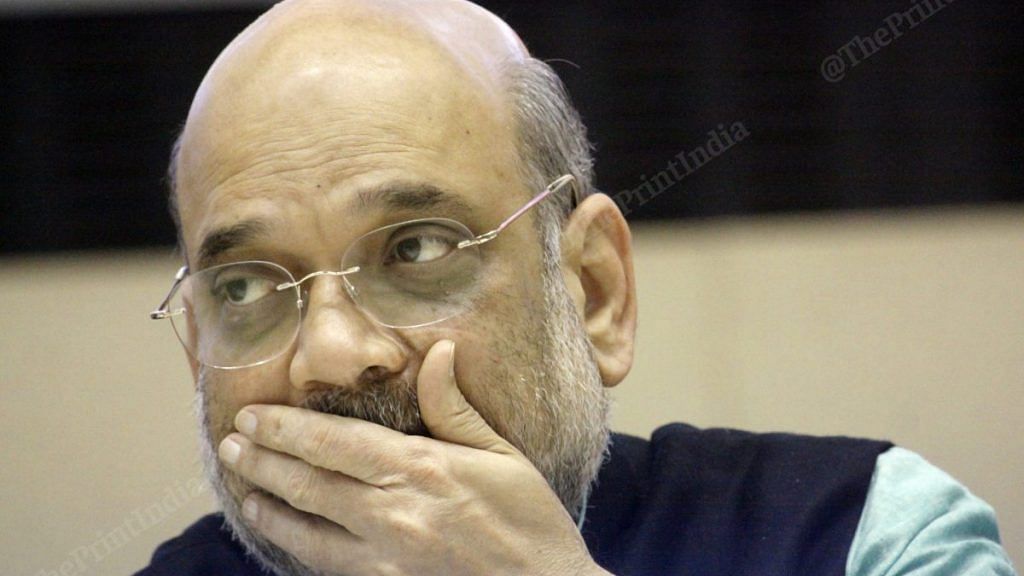China has almost always protested any Indian minister’s visit to Arunachal Pradesh, which it still claims is a part of ‘south Tibet’. The latest being its opposition to Home Minister Amit Shah’s visit.
Even as Amit Shah landed in Arunachal Pradesh, China’s foreign ministry spokesman Geng Shuang said the visit “violated China’s territorial sovereignty, undermined the stability of the border area, sabotaged political mutual trust, and violated relevant bilateral agreement”. India’s external affairs ministry strongly rebutted the Chinese objection to Shah’s visit to be part of the 34th Statehood Day celebrations.
Around the same time last year, Prime Minister Narendra Modi had visited Arunachal Pradesh and laid the foundation stone of the new greenfield airport at Hollongi. He also inaugurated the Tezu airport in Lohit district and announced infrastructure projects to the tune of about Rs 4,000 crore. Even at that time, China had objected “to the Indian leader’s visit to the eastern sector of the Sino-Indian border”. Not that Modi cared.
At a time when New Delhi is preparing to extend all possible assistance to China to overcome the novel coronavirus epidemic, the minimum that is expected of Beijing is to be realistic in its approach and accept ground reality.
Also read: India rejects China’s opposition to Amit Shah’s visit to Arunachal Pradesh
Constant protest by China
Former Prime Minister Manmohan Singh visited Arunachal Pradesh in 2008 and had made commitments to improve the infrastructure there. He identified four priority areas, similar to the ones that Narendra Modi had identified 10 years later, such as connectivity through roads, railways and airports, general infrastructure, educational and health care facilities and economic development through tourism and power projects. More importantly, Manmohan Singh said, “The sun kisses India first in Arunachal Pradesh. It is our land of the rising sun… It is my sincere hope that like the sun, Arunachal Pradesh will also rise from the east as a new star and become one of the best regions of our country.”
His earlier proposed visit in 2007 was cancelled presumably due to internal party conflict in the Congress. There were attempts to project the cancellation as a step backwards in India’s position on Arunachal Pradesh. But his subsequent visit reiterated the Indian position on the state as an “integral and inalienable” part of India. The Chinese objections were also dismissed by then Finance Minister Pranab Mukherjee who had said that China had objected to his visit to Tawang in Arunachal Pradesh.
In 2009, the Dalai Lama visited Tawang monastery after a gap of almost five decades when he first fled from that area following Chinese takeover. Beijing strongly protested the logistical support provided by New Delhi for this visit. During his next Tawang visit eight years later, the Chinese foreign office was even more vocal in its protest. Then, in 2014, the leader of the Tibetan Administration Council in India, traditionally referred to as the Prime Minister of the Tibetan Government-in-exile, Lobsang Sangay was invited to the swearing-in ceremony of Prime Minister Modi. China, once again, sent a strong protest note.
Also read: Army chief Naravane must hold back on China border issue till Tibet is settled
Tibet border issue
Arunachal Pradesh shares a border of 1,030 kilometres with Tibet, which is unfenced. After the occupation of Tibet by China, the India-Tibet border became the India-China border and is part of the unresolved border dispute. China claimed Sikkim also as its territory but gave up its claim in 2003 after a border trade agreement during then Prime Minister Atal Bihari Vajpayee’s Beijing visit.
While India has consistently maintained that Arunachal Pradesh is an integral part of India and therefore not subject to any border dispute-resolution mechanism, China has also consistently claimed ownership over the area referring to it “Southern Tibet”.
An important reason for China’s assertion could be the continuous rebellion in the China-occupied Tibet area bordering Arunachal Pradesh. There are many unreported incidents. It has become even more worrisome for Beijing considering the fact that it has been facing serious rebellion in the Uyghur-dominated Xinjiang province and international flak over its detention centres.
Also read: It’s time India stopped seeing China’s border moves as ‘salami slicing’
Dispute resolution on plate
The religious demography along the Arunachal Pradesh-Tibet border is mostly Buddhist and the cultural and social traditions are very similar. There are close family connections with members of the same family living on either side of the border. But one must admit the fact that China has provided fairly good infrastructure in this border area with clear strategic calculations in mind. Needless to say, New Delhi has begun to concentrate on infrastructure development in this area after a drastic change in its strategy towards border areas.
The India-China border dispute is a complicated issue and it is futile to expect it to be resolved in the ‘early harvest’ manner suggested by China through the Sikkim proposal. Any final or partial demarcation could be used by Beijing to settle its dispute with Bhutan leading to its official control over the Doklam plateau. Such a situation can lead to China having an upper hand in areas overlooking the Chumbi Valley and can facilitate the People’s Liberation Army to use it as a launchpad to enter the Siliguri corridor.
And despite all the risks, India has agreed to consider China’s Sikkim proposal, provided they agree to resolve the middle sector dispute simultaneously.
The author is a member of the National Executive Committee of the BJP and former editor of Organiser. Views are personal.
